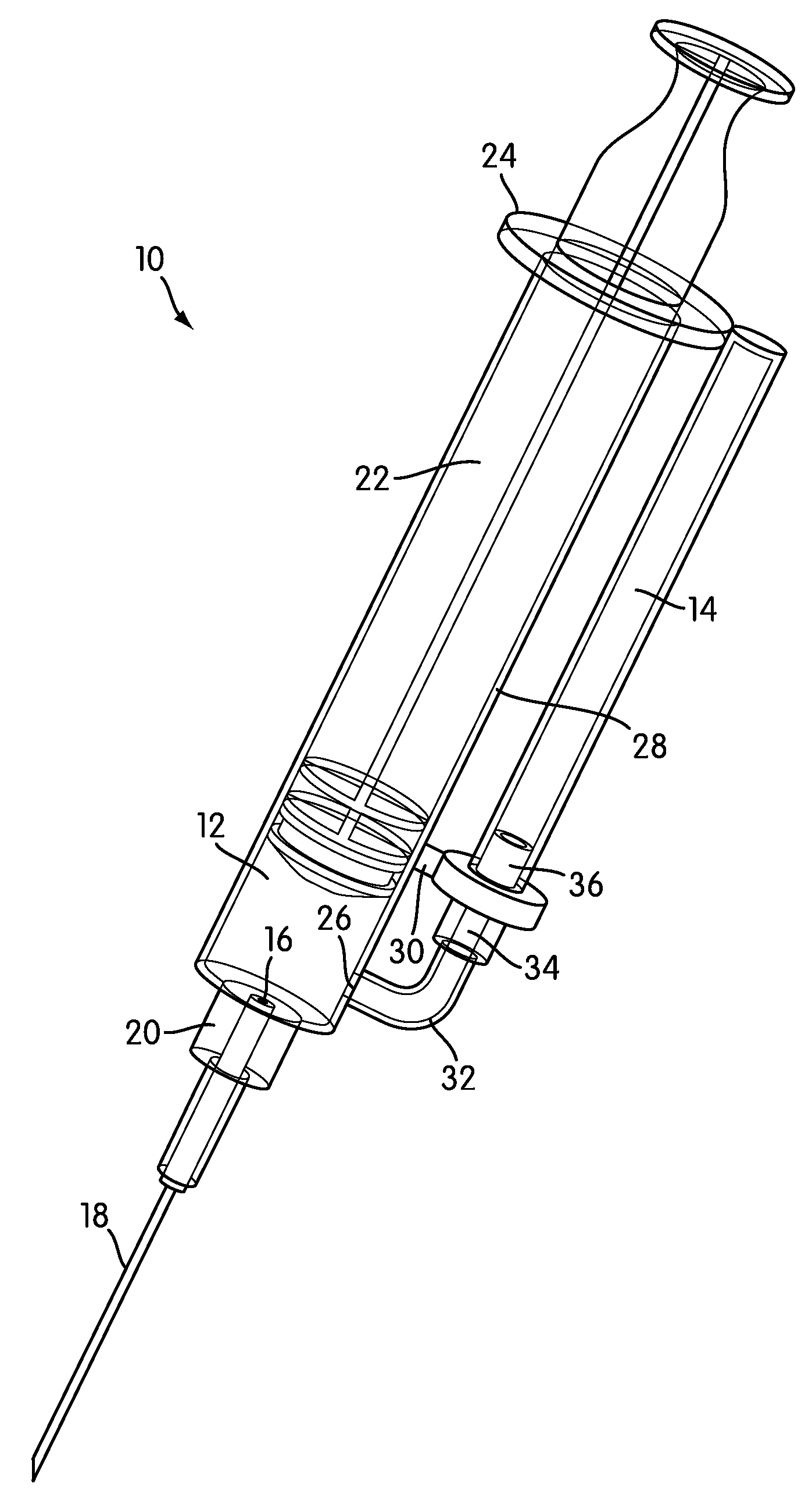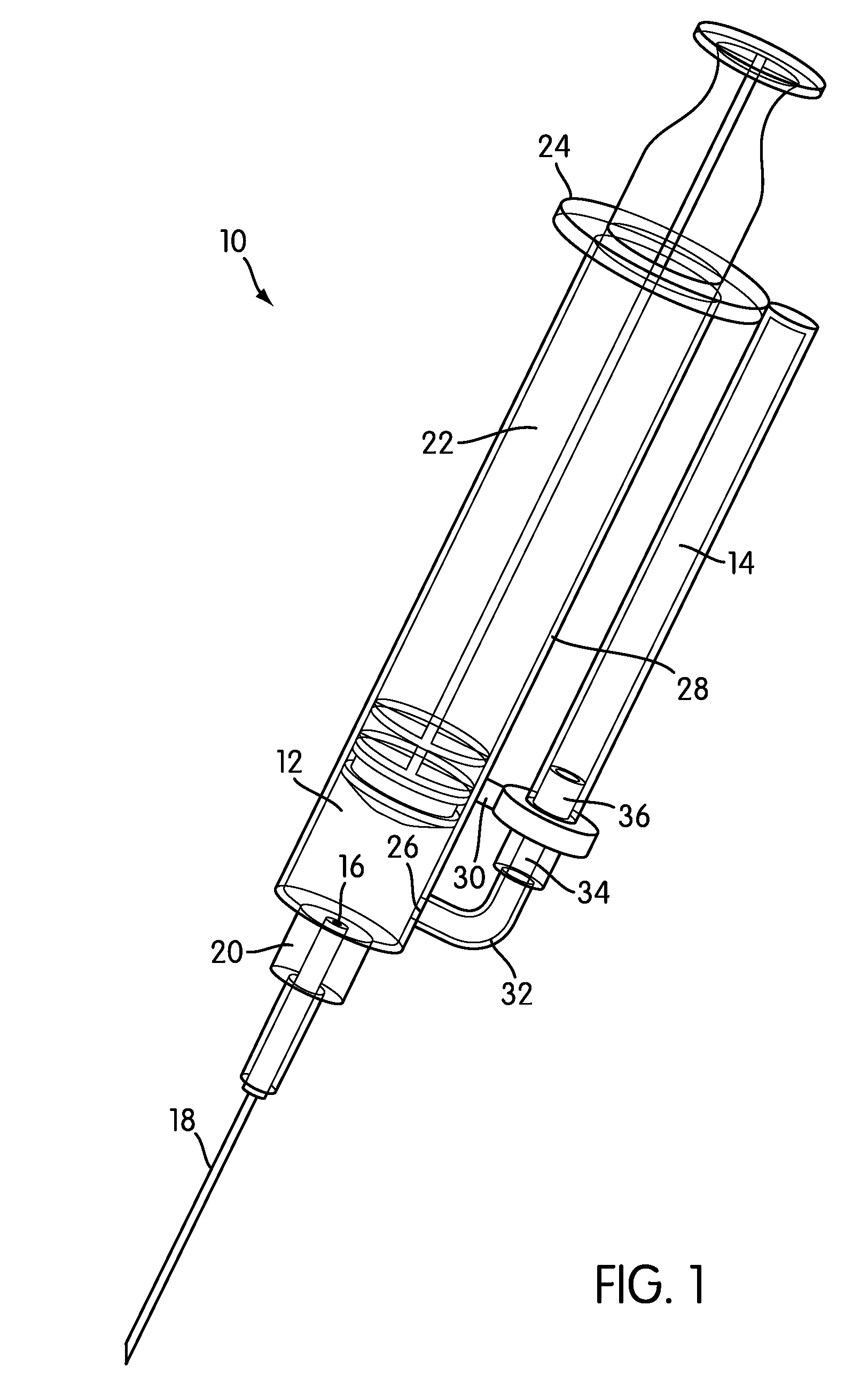Venous-arterial detector and pressure indicator
a technology of pressure indicator and vein catheter, which is applied in the field of medical devices for blood vessel access, can solve the problems of difficult for a clinician to determine whether he or she has punctured an artery or a vein, a large amount of bleeding, and the delivery of a vein treatment into an artery can have serious adverse effects on the patien
- Summary
- Abstract
- Description
- Claims
- Application Information
AI Technical Summary
Problems solved by technology
Method used
Image
Examples
Embodiment Construction
[0020]FIG. 1 is a perspective view of a venous-arterial detector, generally indicated at 10, according to one embodiment of the invention. FIG. 2 is a front elevational view of the detector 10, and FIG. 3 is a side elevational view of the detector 10. The detector 10 has a primary or first chamber 12 and an indicator chamber 14.
[0021]The first chamber 12 has the general form of a syringe chamber; in the illustrated embodiment, it is generally cylindrical and has a first opening 16 at a first end. The first opening 16 places the first chamber 12 in fluid communication with a hollow needle 18, so that fluid flowing into the needle can flow into the first chamber 12. The needle 18 is physically connected to the first chamber 12 by appropriate connecting structure 20, which may differ from embodiment to embodiment. Generally speaking, it is advantageous if the connecting structure 20 allows the first chamber 12, and the detector 10 itself, to be detached from the needle 18.
[0022]The fir...
PUM
 Login to View More
Login to View More Abstract
Description
Claims
Application Information
 Login to View More
Login to View More - R&D
- Intellectual Property
- Life Sciences
- Materials
- Tech Scout
- Unparalleled Data Quality
- Higher Quality Content
- 60% Fewer Hallucinations
Browse by: Latest US Patents, China's latest patents, Technical Efficacy Thesaurus, Application Domain, Technology Topic, Popular Technical Reports.
© 2025 PatSnap. All rights reserved.Legal|Privacy policy|Modern Slavery Act Transparency Statement|Sitemap|About US| Contact US: help@patsnap.com



